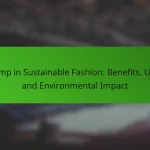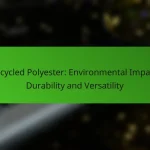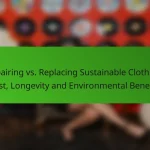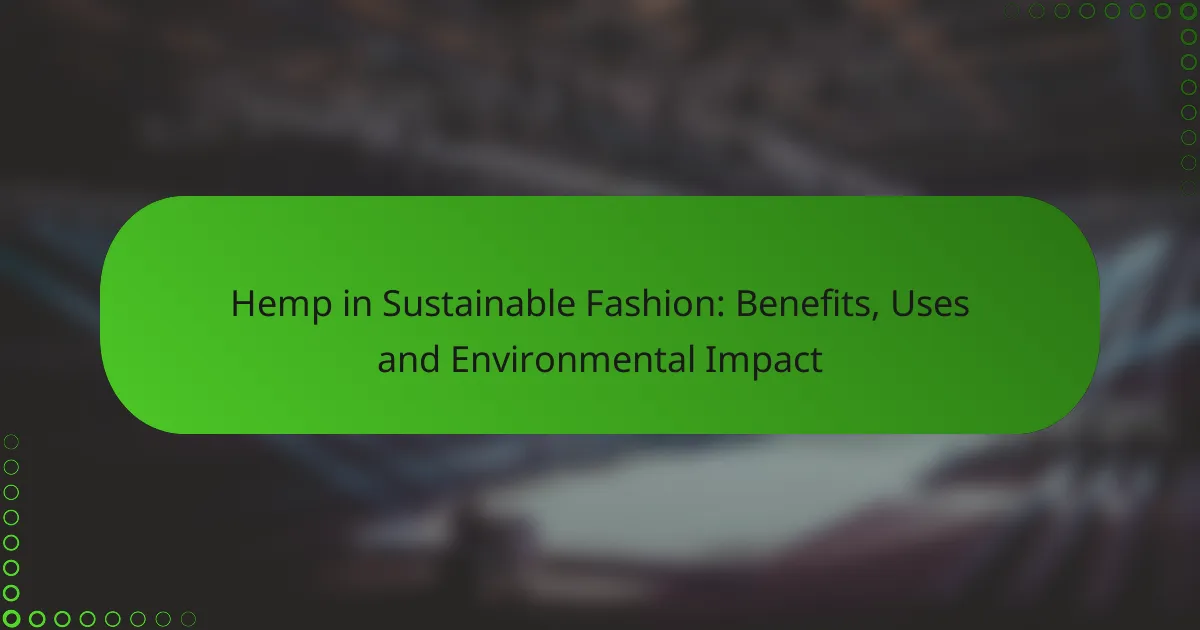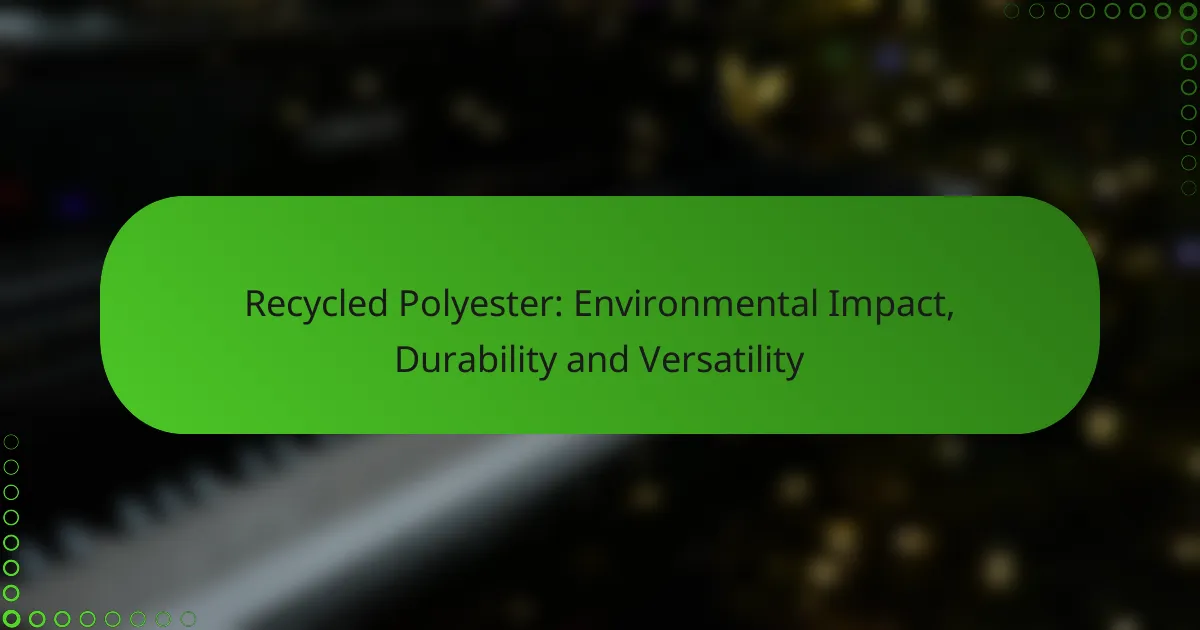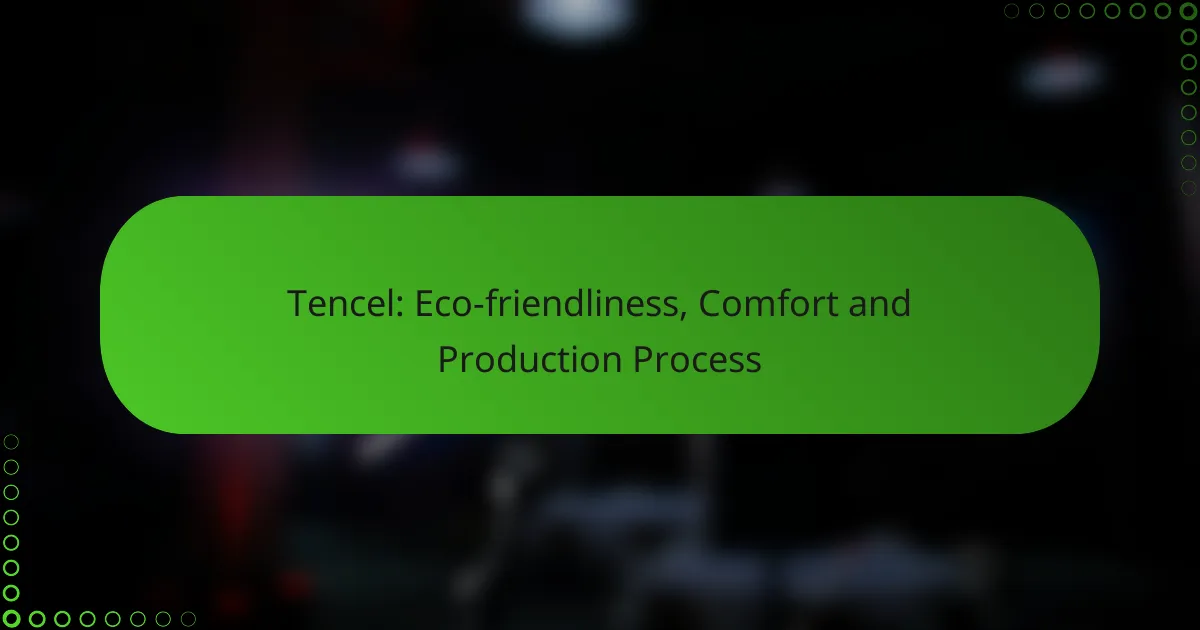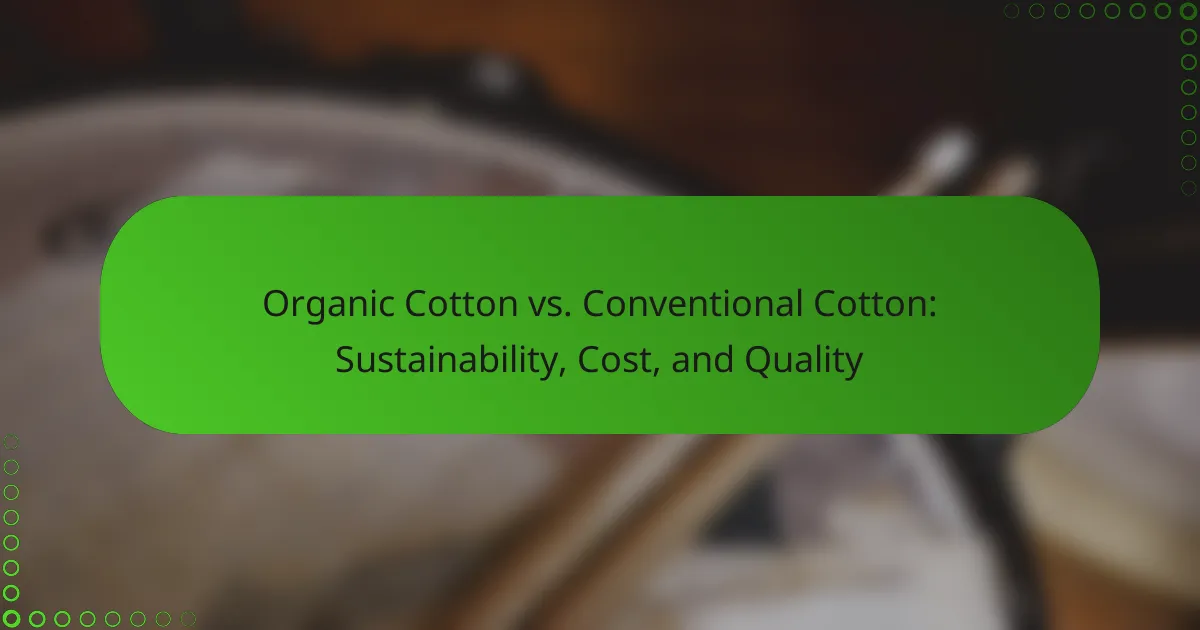Hemp is emerging as a key player in sustainable fashion, offering an eco-friendly alternative to traditional textiles. Its durability, comfort, and versatility make it an ideal choice for consumers seeking long-lasting and functional apparel while minimizing environmental impact.
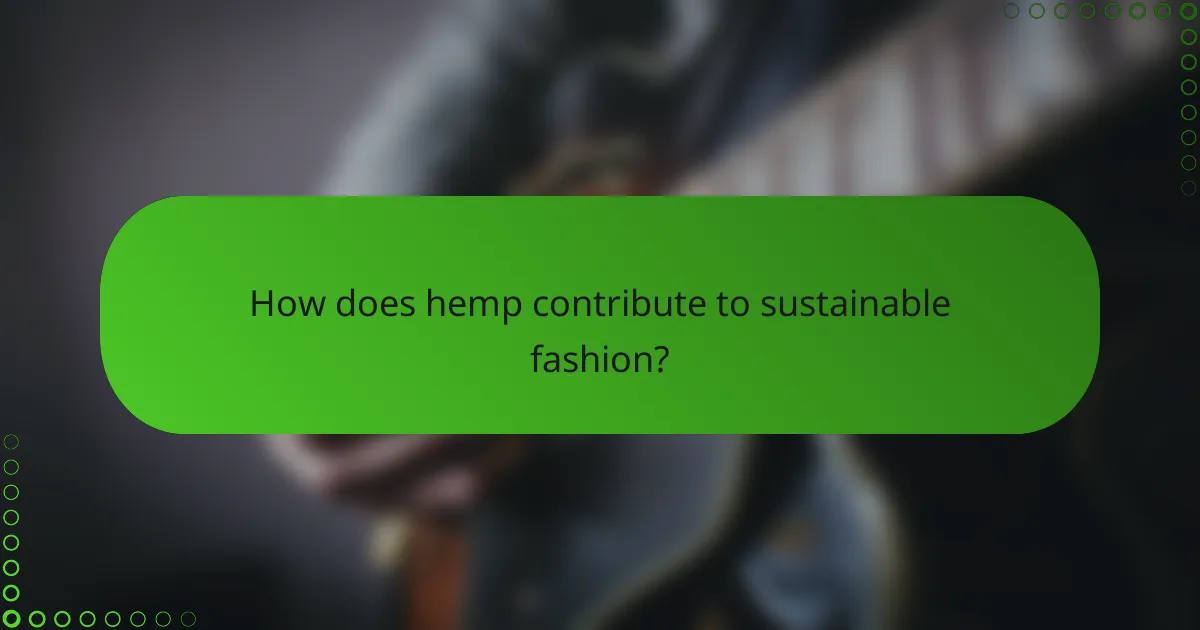
How does hemp contribute to sustainable fashion?
Hemp contributes to sustainable fashion by providing an eco-friendly alternative to conventional textiles. Its properties make it a versatile material that reduces environmental impact while promoting a circular economy.
Biodegradable material
Hemp is a fully biodegradable material, meaning it can decompose naturally without leaving harmful residues. This characteristic contrasts sharply with synthetic fibers, which can take hundreds of years to break down.
When hemp garments reach the end of their life cycle, they can be composted, returning nutrients to the soil. This process not only minimizes waste but also supports sustainable agriculture practices.
Low environmental impact
The cultivation of hemp requires significantly less water and pesticides compared to cotton and other conventional crops. This low resource requirement makes hemp a more sustainable choice for fashion brands looking to reduce their ecological footprint.
Additionally, hemp grows quickly and can be harvested in a short time frame, often within 3-4 months. This rapid growth cycle allows for multiple harvests in a year, maximizing land use efficiency.
Carbon sequestration
Hemp plants are effective at sequestering carbon dioxide from the atmosphere, which helps mitigate climate change. They can absorb substantial amounts of CO2 during their growth, making them a valuable asset in carbon offset strategies.
Research suggests that hemp can sequester more carbon per hectare than many other crops, contributing to a reduction in greenhouse gases. This characteristic makes hemp an appealing option for brands committed to sustainability and environmental responsibility.

What are the benefits of using hemp in clothing?
Hemp offers numerous benefits in clothing, including sustainability, durability, and comfort. Its natural properties make it an excellent choice for eco-conscious consumers looking for long-lasting and functional apparel.
Durability and strength
Hemp fibers are known for their exceptional durability and strength, making them ideal for clothing that withstands wear and tear. Compared to cotton, hemp is significantly stronger and can last several times longer, reducing the need for frequent replacements.
This durability translates into lower long-term costs for consumers, as hemp garments tend to maintain their shape and integrity over time. Additionally, the resilience of hemp makes it suitable for various clothing types, from casual wear to work attire.
Natural UV resistance
Hemp possesses natural UV resistance, providing an added layer of protection against harmful sun rays. This quality is particularly beneficial for outdoor clothing, as it helps prevent skin damage and fading of the fabric.
Garments made from hemp can block a significant portion of UV radiation, making them a smart choice for those who spend extended periods outside. This feature not only enhances personal safety but also contributes to the longevity of the clothing itself.
Moisture-wicking properties
Hemp fibers have excellent moisture-wicking properties, allowing them to absorb and evaporate sweat efficiently. This characteristic keeps the wearer dry and comfortable, especially in warm or humid conditions.
Clothing made from hemp is less likely to cling to the body when wet, providing a more pleasant wearing experience. This makes hemp an ideal fabric for activewear and summer clothing, where breathability and moisture management are crucial.

What are common uses of hemp in fashion?
Hemp is increasingly utilized in fashion for its versatility and sustainability. Common uses include textiles for clothing, accessories, and footwear, as well as blends with other fibers to enhance performance and comfort.
Hemp textiles for apparel
Hemp textiles are known for their durability and breathability, making them ideal for various types of clothing. They can be used in everything from casual wear to high-end fashion, often blended with cotton or other fibers to improve softness and reduce wrinkles.
When choosing hemp apparel, consider factors such as weight and weave. Lightweight hemp fabrics are suitable for summer clothing, while heavier weaves work well for outerwear. Look for certifications like Global Organic Textile Standard (GOTS) to ensure sustainable sourcing.
Hemp accessories and footwear
Hemp is also popular in accessories such as bags, belts, and hats due to its strength and eco-friendliness. These items often feature natural dyes and finishes, appealing to environmentally conscious consumers.
In footwear, hemp can be used in both the upper and sole components, providing a sustainable alternative to synthetic materials. Brands are increasingly offering hemp-based shoes that combine style with reduced environmental impact.
Hemp blends with other fibers
Hemp blends well with various fibers, enhancing the properties of both. For example, blending hemp with cotton results in a fabric that is softer and more comfortable while retaining hemp’s durability.
Common blends include hemp with organic cotton, linen, and even recycled polyester. These combinations can improve moisture-wicking, stretch, and overall fabric performance, making them suitable for activewear and everyday clothing.
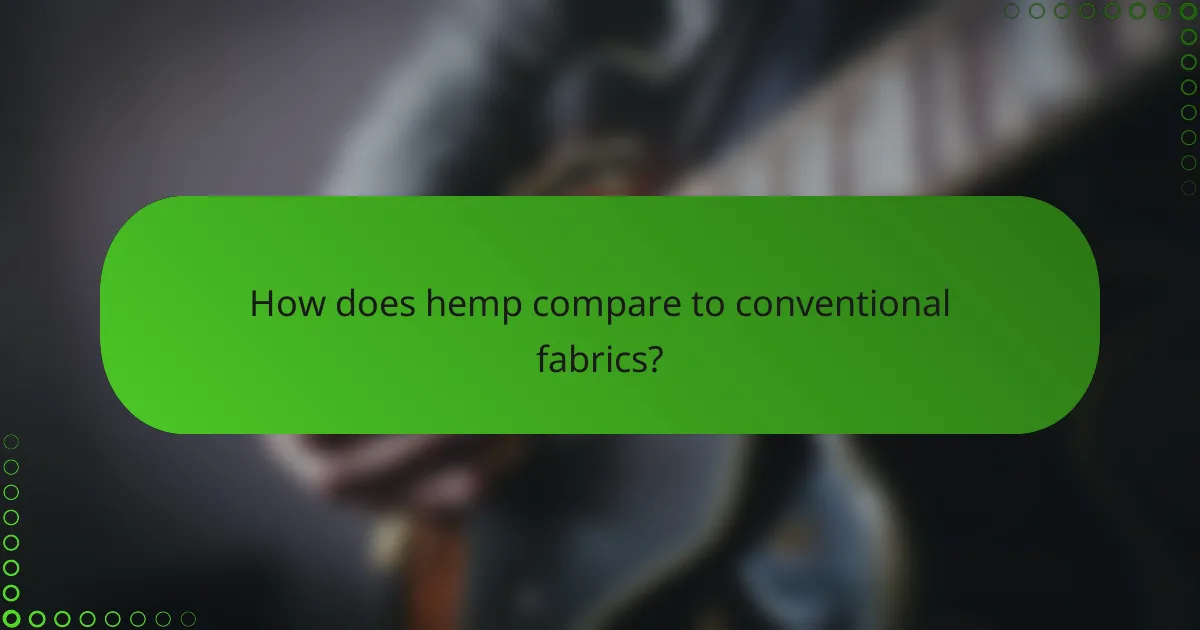
How does hemp compare to conventional fabrics?
Hemp offers several advantages over conventional fabrics, particularly in sustainability and environmental impact. It requires less water, fewer pesticides, and lower energy consumption during production, making it a more eco-friendly choice for fashion.
Water usage comparison
Hemp is significantly more water-efficient than many conventional fabrics, such as cotton. While cotton can require thousands of liters of water per kilogram, hemp typically needs only a fraction of that, often in the low hundreds of liters. This makes hemp a more sustainable option, especially in regions where water scarcity is a concern.
Pesticide requirements
Hemp is naturally resistant to pests and diseases, which reduces the need for chemical pesticides. In contrast, conventional crops like cotton often rely heavily on pesticides, contributing to environmental degradation and health risks. By choosing hemp, consumers can support a fabric that promotes healthier ecosystems.
Energy consumption in production
The energy required to produce hemp fabric is generally lower than that for conventional fabrics. For instance, the processing of hemp fibers can consume less energy due to its simpler cultivation and harvesting methods. This lower energy consumption contributes to a reduced carbon footprint, making hemp a more sustainable choice in the fashion industry.

What are the environmental impacts of hemp cultivation?
Hemp cultivation has several positive environmental impacts, including improved soil health, enhanced biodiversity, and reduced soil erosion. These benefits contribute to a more sustainable agricultural practice and promote ecological balance.
Soil health improvement
Hemp is known for its ability to enrich soil health through its deep root system, which aerates the soil and enhances its structure. This plant can also absorb nutrients from deeper soil layers, making them available to subsequent crops. Additionally, hemp’s biomass can be used as green manure, returning organic matter to the soil and improving fertility.
Biodiversity support
Hemp fields can support a diverse range of flora and fauna, creating habitats for various species. The plant’s growth provides shelter and food for pollinators and other beneficial insects, which are crucial for maintaining ecosystem balance. By promoting biodiversity, hemp cultivation can help mitigate the effects of monoculture farming practices.
Reduction of soil erosion
The dense growth of hemp helps to stabilize the soil and prevent erosion, particularly on slopes and in areas prone to heavy rainfall. Its extensive root system binds the soil, reducing the risk of runoff and loss of topsoil. This characteristic makes hemp an effective crop for sustainable land management and conservation efforts.

What are the challenges of using hemp in fashion?
Using hemp in fashion presents several challenges, including regulatory hurdles, market acceptance, and the perception of hemp products. These factors can limit the growth and integration of hemp into mainstream fashion.
Regulatory hurdles
Regulatory hurdles are significant obstacles for the hemp fashion industry. Many countries have strict regulations regarding the cultivation and processing of hemp, often stemming from its association with cannabis. This can lead to lengthy approval processes and compliance costs that deter new entrants.
In the European Union, for instance, hemp must contain less than 0.2% THC to be legally cultivated, which can complicate sourcing. In the United States, regulations vary by state, creating a patchwork of compliance requirements that can be challenging for brands operating nationally.
Market acceptance
Market acceptance of hemp in fashion is another challenge, as consumer perceptions can be influenced by stigma associated with cannabis. Many consumers may not be aware of the benefits of hemp, such as its durability and sustainability, which can hinder demand.
Brands need to educate consumers about the advantages of hemp, including its low environmental impact and biodegradability. Effective marketing strategies that highlight these benefits can help shift perceptions and increase acceptance.
Production scalability
Production scalability is a critical issue for hemp in fashion. While hemp can be grown in various climates, the infrastructure for processing and manufacturing hemp textiles is still developing. This can lead to limited supply and higher costs compared to more established materials like cotton or polyester.
To overcome this, brands should consider partnerships with established hemp producers and invest in local supply chains. This can help ensure a more consistent supply while supporting local economies.

